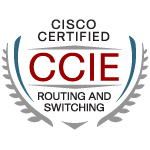Metro Ethernet Service Architectures
In the most general sense of the term, Metro Ethernet services are network services in which connectivity is provided to the customers via a standard Ethernet User-to-Network Interface (UNI). This is a broad definition because multiple technologies can provide Metro Ethernet services from optical cross-connects (OXC), pure Layer 2 networks, or packet-switched networks.
Because of the broad definition, it is critical to categorize these services. Several taxonomies for Metro Ethernet produce an eclectic portfolio of services. You can categorize Metro Ethernet services as follows:
- Based on connectivity type:
Point-to-point Similar to a permanent virtual circuit (PVC).
Multipoint Similar to a cloud.
- Based on service types:
Wire services A port does not have multiplexing. A customer port connects to a single remote customer port. This is similar to a leased line.
Relay services Service multiplexing is available based on VLAN, such that different customer VLANs within a customer port can connect to different sites. This is similar to a Frame Relay port.
Combining these two categorizations, you have the first four sets of Metro Ethernet services:
- Ethernet Wire Service (EWS) A nonmultiplexed point-to-point service.
- Ethernet Relay Service (ERS) A VLAN-multiplexed point-to-point service.
- Ethernet Multipoint Service (EMS) A nonmultiplexed point-to-cloud service. An example is Virtual Private LAN Service (VPLS), which is covered in Chapter 15, “Virtual Private LAN Service.”
- Ethernet Relay Multipoint Service (ERMS) A VLAN-multiplexed point-to-cloud service. The service provider cloud has VLAN mapping. An example is VPLS, which is covered in Chapter 15.
Other Metro Ethernet services are as follows:
- Ethernet Private Line (EPL) Similar to EWS service, except it is provided at Layer 1 by OXCs.
- Layer 2 VPN access Layer 2 access to Multiprotocol Label Switching (MPLS) VPNs.
- ATM to Ethernet over MPLS or Ethernet over L2TPv3 Interworking This topic is covered in Chapter 14, “Layer 2 Interworking and Local Switching.”
- Frame Relay to Ethernet over MPLS or Ethernet over L2TPv3Interworking This topic is covered in Chapter 14.
Table 4-2 summarizes the characteristics of different Metro Ethernet services.
Table 4-2. Metro Ethernet Services
| Metro Ethernet Service |
Architecture |
Service Definition |
Connectivity |
| EPL |
Layer 1 |
Transparent (nonmultiplexed) |
Point-to-point |
| EWS |
VPWS[1] |
Transparent (nonmultiplexed) |
Point-to-point |
| ERS |
VPWS |
Multiplexed |
Point-to-point |
| EMS |
VPLS |
Transparent (nonmultiplexed) |
Multipoint-to-multipoint |
| ERMS |
VPLS |
Multiplexed |
Multipoint-to-multipoint |
| ATM/Frame Relay Ethernet Interworking |
VPWS |
Multiplexed |
Point-to-multipoint |
VPWS = Virtual Private Wire Service
All these categories vary in implementation, but some generalities exist. Table 4-3 shows the interface type of the PE devices both toward the customer and toward the core. The PE devices can be logical devices that are distributed among different physical PEs. In such a case, the user-facing PE is called U-PE, and the network-facing PE is called N-PE.
Table 4-3. Metro Ethernet Services
| Metro Ethernet Service |
U-PE <-> Customer |
N-PE <-> Service Provider |
| EPL |
QinQ[1] |
WDM[2] wavelength
SONET/SDH[3] circuits |
| EWS |
QinQ |
EoMPLS[4] |
| ERS |
802.1q Trunk |
EoMPLS |
| EMS |
QinQ |
Ethernet or EoMPLS |
| ERMS |
802.1q Trunk |
EoMPLS |
| ATM/Frame Relay Ethernet Interworking |
Frame Relay or ATM |
EoMPLS |
QinQ = Stands for 802.1q in 802.1q and is also referred to as 802.1q tunneling
WDM = wavelength division multiplexing
SDH = Synchronous Digital Hierarchy
EoMPLS = Ethernet over MPLS
Note that the transparent services use QinQ facing the customer to provide “VLAN bundling” in a port-based service and achieve transparency for customer bridge protocol data units (BPDUs). On the other hand, the relay services use 802.1q trunking facing the customer in a VLAN-based service to provide the VLAN-multiplexed UNI; thus, they are opaque to customer BPDUs. |

